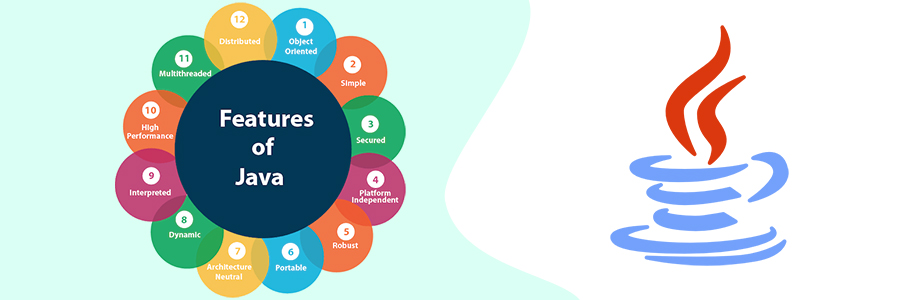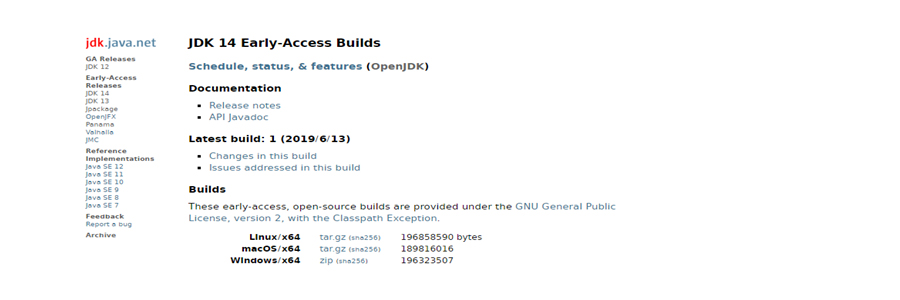The Best New Features in Java 14

The work towards the development of the successor of Java 13 has already begun. With two officially proposed features and another in the way, Java Development Kit (JDK) 14 is coming to light. Along with switch expressions in JDK 14, JDK Enhancement Proposal would develop Java’s mapped byte buffers for supporting non-volatile memory. The production release of JDK 14 is scheduled for 17th March 2020. Yet the third feature, switch expressions, has to be proposed officially.
Java is an object-oriented language which is similar to C++ but with more simplified and advanced features. It can be accessed freely and could be run on any platform. Since it is concurrent, you can execute many statements at a time instead of serially performing it. This independent programming languages follow the logic of ‘Write once, Run anywhere’ which signifies that the code can be executed on any platform, which supports Java. In other words, it provides a computing platform to develop applications.
By removing complexities such as operator overloading and pointers that could be noticed in the C++, Java has made our lives simpler. Its platform independence feature makes it easier to transfer application written on one platform to another platform. With a robust memory management system, it eliminates any error that is detected during runtime and compiles. After compilation, all the codes are converted into bytecode which is not readable by human beings which in turn, ensures the security of data which cannot be accessed by untrusted sources.
From as early as the 2000s, Java has remained highly popular and has been dominating this field until the present. The reason behind its popularity can be understood by going through the opportunities it provides in various domains, some of which are listed below.
- It’s used in the banking sector for dealing with management in transaction
- In retail, it’s used for billing applications in restaurant/store. The billing is wholly done in Java.
- The program is specifically designed to solve implementation dependencies.
- In Android, applications are written either in Java or use Java API.
- Also, it facilitates in managing financial services and is used in server-side applications.
- In the stock market, Java is used for writing algorithms to which company they should invest in.
- In the scientific and research community, it helps to deal with a massive amount of data.
This tool is necessary to package Java programs, compile, and document. JRE is included under JDK, which consists of tools for Java programmers, and it all comes without any extra cost. Also, it consists of a compiler, an interpreter, documentation, an archiver along with other essential tools required in Java development services.
In this environment, Java bytecode can be executed. JVM is implemented which provides all class libraries and other files that are used by JVM at runtime. The software package, JRE, contains everything that is required to run a Java program. It’s the implementation of JVM which already physically exists.
This abstract machine is a specification which establishes a run-time environment for the execution of Java bytecode. Usually it follows three notations:
- Implementation- This program meets the requirements of the JVM specification.
- Specification- The implementation of the virtual Java machine is described in this document which is provided by various companies.
- Runtime Instance- Whenever you write a Java command on the command prompt, an instance of JVM is created.

Here are some of the elements of the previous versions for you to compare between the previous ones and the latest one that will be launched.
- One of the most prominent new features in JDK 12 is switched expression, which is also the first language change. At the start of 2018, the idea of preview language features was proposed under JEP 12. If not well received, it’s possible to make modifications or remove it altogether.
- Another useful feature in JDK 12 is the introduction of libraries. The collector utility class provides a new collector to the stream API. Using the teeing method, this unique collector can be acquired. Usually, the teeing collector accepts three arguments, a BiFunction and two collectors. Values from the input are passed into each collector. To evaluate and generate the final result, the result produced by each collector is given to the Bifunction as an argument.
- A minimal number of APIs and features are provided by JDK 12 such as switch expression which is the most exciting feature for developers. Undoubtedly, G1 users will appreciate improvements in performance.
- In JDK 13, the text block feature is added. It is a multi-line string that avoids the requirement for most escape sequences. Automatically, it formats the string in a manner that provides control over the format to the developers. Behind the addition of text blocks in Java, lies several rear screen reasons. One among them is to simplify the writing of Java program by facilitating a natural expression of several lines of source code by avoiding escape sequences.
- To yield a value, there has been a little modification in the switch expression feature in JDK 13. The extension of a switch makes it possible to use it either as an expression or a statement. The changes made in the switch expression of JDK 13 are intended to prepare it for pattern matching and to simplify coding.

Features that were lacking in the previous version of Java are implemented in the new version, i.e. Java 14. Mentioned below are the three characteristics which are expected to come along when Java 14 will be launched. Developers are still working for the development of features in Java 14.
- The NullPointerExceptions feature is dedicated to the improvement of the exceptions produced by the JVM by pointing out a particular variable that is null. Authors who have proposed the idea are looking to support staff about the untimely dismissal of the program and develop program knowledge by associating static program code with the dynamic exception. One of its primary goals is to prevent concern and confusion that developers have in their mind.
- JDK file mapping mode is added by non-volatile mapped byte buffers to allow the use of FileChannel API for creating MappedByteBuffer that refer to NVM or non-volatile memory. This feature will enable programmers to update and build a program without retrieving the translation and copying costs that are usually required by the output and input operations. The chief goal of the JDK Enhancement Proposal is to make sure that the clients can easily update and access NVM from a Java program efficiently. Another goal is to carry out this behaviour using JDK- internal API described in class Unsafe so that it can come to the use of other courses other than MappedByteBuffer. The third goal is to enable APIs to track buffers mapped over NVM for management and monitoring.
- By extending switch, switch expressions work to simplify coding so that it could be used either as an expression or a statement. In JDK 14, the switch expressions are expected to remain a permanent facility after being seen in JDK 12 and JDK 13. This feature also takes care of the use of pattern matching in a switch, which will enable developers to extract components safely and concisely from objects in certain circumstances.
